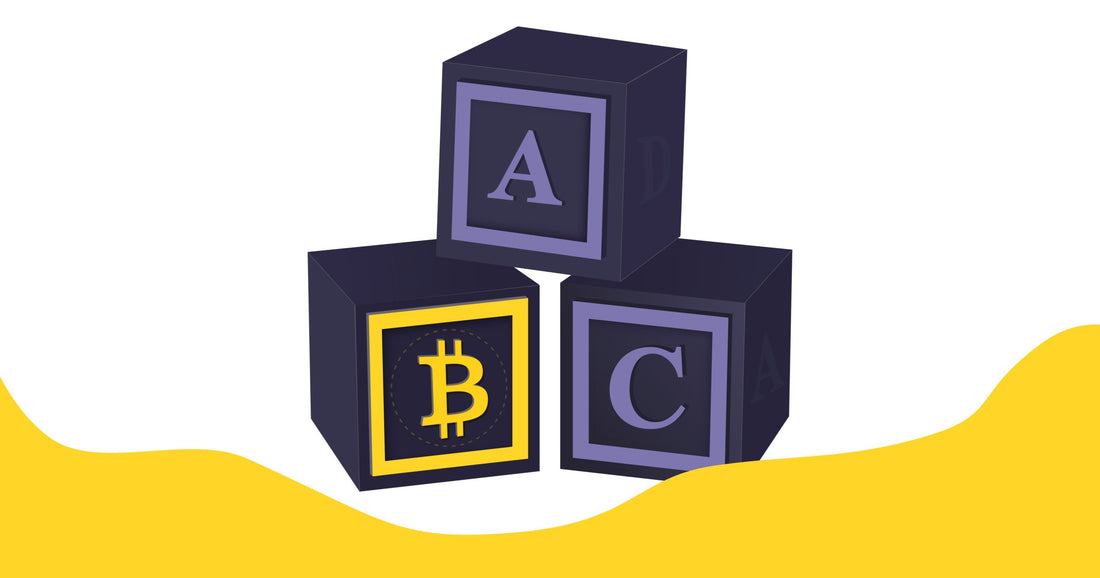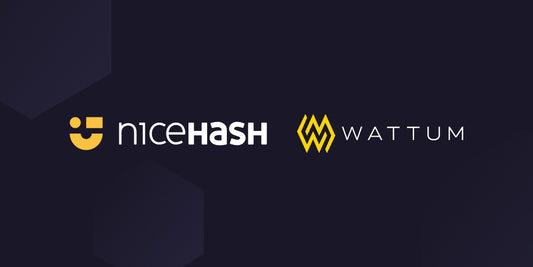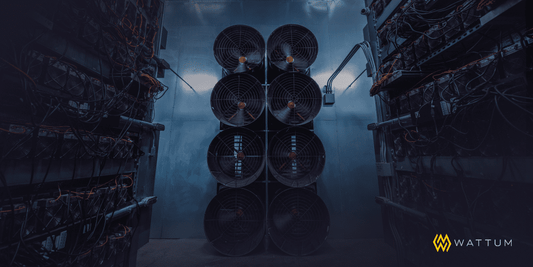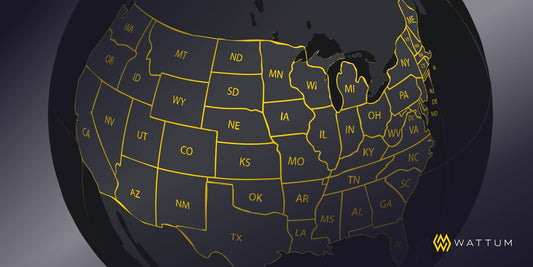When you think of mining, your first thought probably goes towards gold. Although different in the sense that it’s executed over digital networks, Bitcoin mining is analogous to gold mining in the sense that it’s the only way to bring more of the asset into circulation.
Bitcoin mining is performed by miners worldwide by validating a certain amount of information and then solving a complex equation, effectively creating a new “block” of information on the blockchain ledger. For each block created, a certain amount of Bitcoin is “minted” into circulation. Unlike gold mining, Bitcoin mining is done by computers that solve problems by way of hashes. A hash is an encrypted code of a fixed length that is created based on information of any length. Hashes provide security and validity to the Bitcoin blockchain. It’s helpful to note that the first block mined by a cryptocurrency is called the Genesis Block.
The Gold Rush of 2021
Bitcoin mining is a costly initiative that requires a strong technical foundation, but the rewards are large. It can be extremely profitable so long as you know what you’re doing, and choose your mining equipment and partners very carefully.
As long as the cost of production is less than the current price of Bitcoin, which it has been for the last leg of Bitcoin’s history, then you will see profits. Bitcoin is earned as a reward for verifying blocks of transactions, and then sent across the network to all other miners and nodes. This network, as well as mining pools, will be discussed in more detail later on in this article.
To earn a mining reward, there are two requirements: You must verify 1MB worth of transactions (the easy part) and then you must solve a computational problem by correctly guessing a hash (the hard part). Verification of transactions is where the concept of Proof of Work comes from.
Guessing of a hash is performed by your mining equipment by taking information from the current block on the blockchain, adding a random number (called a nonce), and converting this new value into a hash. If the value of this hash is less than or equal to a target hash set by the current difficulty of the blockchain, then the new block is created and you earn the block reward.
Because there are so many people competing to be the first to solve this problem, there are a huge number of hashes that must be guessed in order to find one that works. Mining machines are valued based on how many hashes they can create in a given time period, which is often referred to as hashpower or hashrate. The best Bitcoin miners today have a hashrate of around 100-110 Terahashes per second (TH/s or just TH).
As the target hash is dependent on how much total hashpower is on the network at any given time, the target hash can range from 0 to 2²²⁴ (a 67+ digit number). Guessing a number this size requires a huge amount of hashpower, as well as a bit of luck.
One used to be able to mine Bitcoin with a basic computer, but as the hashpower has increased over time, more and more computer power is necessary to stand a chance of mining successfully. Nowadays, mining is only profitable through the use of application specific integrated circuits (ASICS). These are expensive machines built specifically for mining that can create huge amounts of hashpower. ASIC prices usually start at around $500, but the best machines can cost tens of thousands. Apart from this good equipment, profitable mining requires knowledgeable partners and some expertise in the mining industry.
Perhaps the most valuable aspect of Bitcoin is its decentralized nature. Decentralization means that there is no central authority like a bank or government to regulate it. Instead, the blockchain is verified and legitimized by miners who are incentivized by the block reward and transaction fees earned through verifying blocks.
Bitcoin and Inflation
Bitcoin was made to be deflationary by nature, with less being released into circulation over time by the process of halving. Halving is an event where the amount of Bitcoin being minted is cut in half, and it occurs roughly every 4 years, or every 210,000 blocks. Because the only way new Bitcoin is minted is through block rewards, the reward is also cut in half through this process. The block reward started at 50 BTC in 2009 when Bitcoin was created, and is currently at 6.25 BTC as of May 2020. Block rewards are given out roughly every 10 minutes, meaning that 900 BTC are being created each day.
The maximum amount of BTC that will ever circulate was set to be 21 million, and is expected to be reached in the year 2140. At this time, block rewards will have reached 0 and the incentive will move from block rewards to a transaction fee earned by the miner for each new block. Bitcoin miners also have voting power, equivalent to their hashpower, to have a say on BTC network protocol including processes such as forking and new network upgrades.
An estimation of Bitcoin profit and rewards can be found from mining calculator sites such as Whattomine, Cryptocompare and Minerstats. These sites offer a real-world estimate based on the network difficulty, cost of electricity, current price of Bitcoin, and current block reward of 6.25 BTC. When considering profitability, it’s important to take into account the cost of equipment and electricity costs wherever you will be operating.
Bitcoin Mining Pools
Because the probability of solving for a hash and earning the block reward is based on your hashrate compared to the entire network’s hashrate, you have a very small chance if you’re operating with a relatively small hashrate.
A mining pool combines the hashrate of individual miners to greatly increase the chances of earning BTC rewards, which are then shared across the pool based on each member’s hashrate. Mining pools are responsible for a huge portion of new blocks created compared to individual miners, making them a great option for those with smaller hashrates who still want to see good profits.
Pools are operated by third parties and coordinated groups of miners, and Wattum collaborates with one of the largest mining pools in the world, ViaBTC, to provide our hosting clients with the best chance at maximizing their mining profitability. Statistics on some of the largest mining pools can be found on Blockchain.info.
With the global hashrate constantly increasing as more and more people get started with mining, the Bitcoin network regulates the difficulty to mine a block so it stays consistent regardless of hashrate. Every 2016 blocks, or approximately two weeks, the difficulty changes to ensure that one block is created roughly every 10 minutes.
The recent China mining ban provided miners with a rare opportunity, with the global hash rate dropping significantly due to a sudden decrease of miners on the network. Along with Bitcoin’s price drop, the price of mining rigs dropped as well, although overall mining profitability remained about the same. The drop in hashrate called for large adjustments to the mining difficulty, which is still recovering from it’s high of 25 trillion in May 2021. To put it into perspective, the difficulty was 1 when Bitcoin launched in 2009. At the time of writing, it sits at around 18.4 trillion - which means that the odds of producing a target hash as of now are 1/18.4t.
Is Bitcoin Mining Legal?
The legality of Bitcoin mining depends entirely on your geographic location. The concept of Bitcoin is centered around decentralization and economic empowerment, so it can be seen as a threat to the dominance of fiat currencies and government control over financial markets. For this reason, Bitcoin is deemed illegal in certain regions.
However, Bitcoin ownership and mining are legal in more countries than not. Some examples of places where Bitcoin is illegal include Algeria, Egypt, Morocco, Bolivia, Ecuador, Nepal, and Pakistan. Overall, Bitcoin use and mining are legal across the majority of the globe, including Kazakhstan, where the crypto-embracing government and cheap import duties only scratch the surface of the opportunities the region presents for Bitcoin mining.
The Risks of Mining
The risks of mining are often tied to financial investment risk, as well as regulatory barriers. One could go through the effort of purchasing thousands of dollars worth of mining equipment, only to end up with no return on their investment.
That being said, financial investment risk can be mitigated by joining a mining pool.
If you want to start mining and live in an area where it’s prohibited, you should consider colocation services. Mining colocation allows you to rent space and host your mining equipment in locations where regulations favour mining, offering access to risk mitigation in pro-crypto regions.
It may also be a good idea to research your country's specific regulations and overall sentiment towards cryptocurrency before investing in mining equipment, so you can make an informed decision on the next steps that are best for you.
A Partner to Get You Started
Since risks and regulations can be overwhelming and hard to navigate, especially as a novel miner, partnering with a knowledgeable industry presence with years of experience is ultimately your best bet to securing a successful mining career.
In addition to colocation, hosting, equipment, and management, Wattum provides guidance and leadership for both new and seasoned miners who are just as passionate about crypto as we are. Amongst all the tech talk and legal jargon, the best way to mitigate your risk in mining is through a partner who can not only educate and empower you as the industry continues to diversify, but can also provide you with the tools you need to succeed now. The best way to mitigate your risk in mining is through Wattum.



